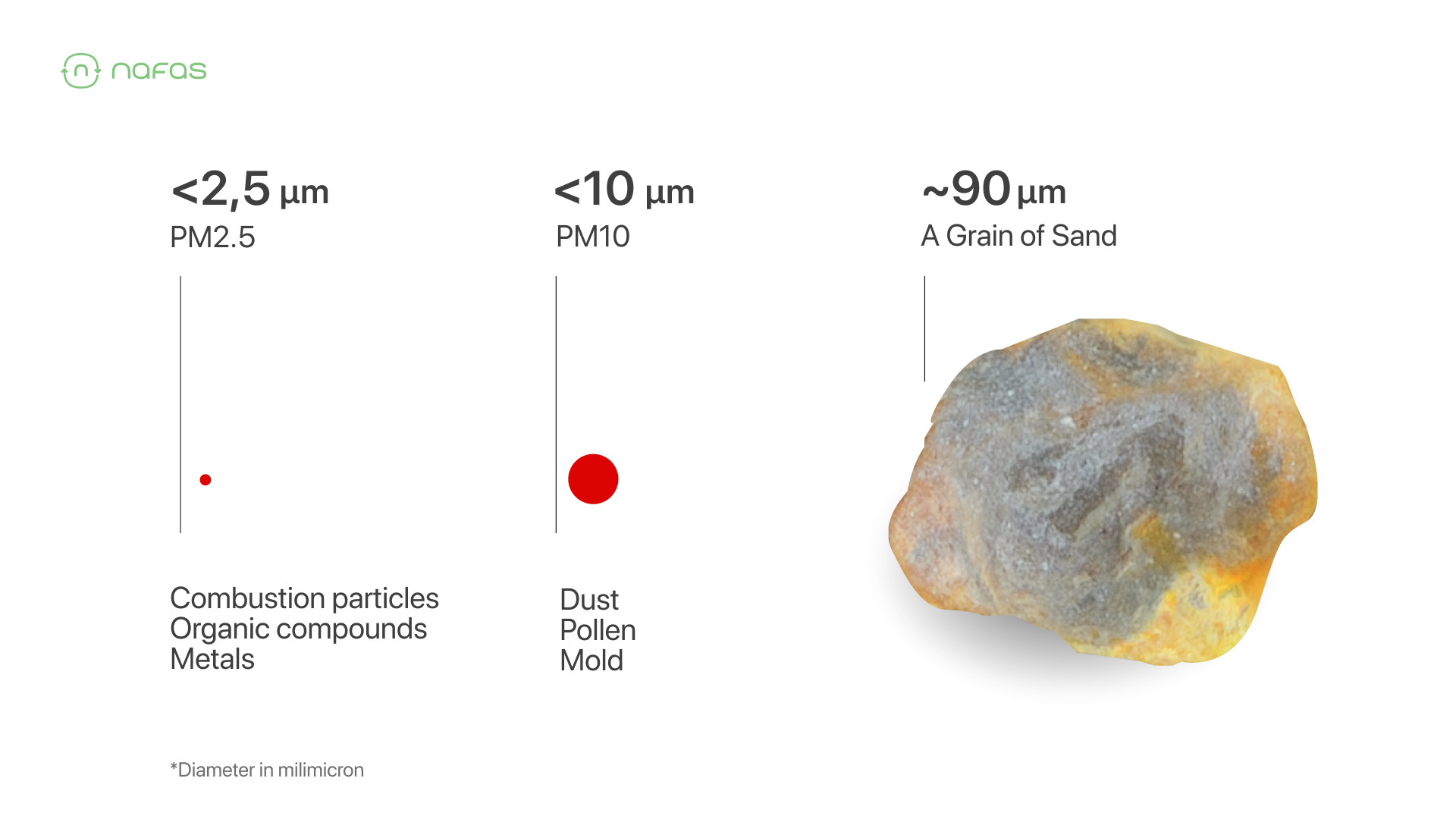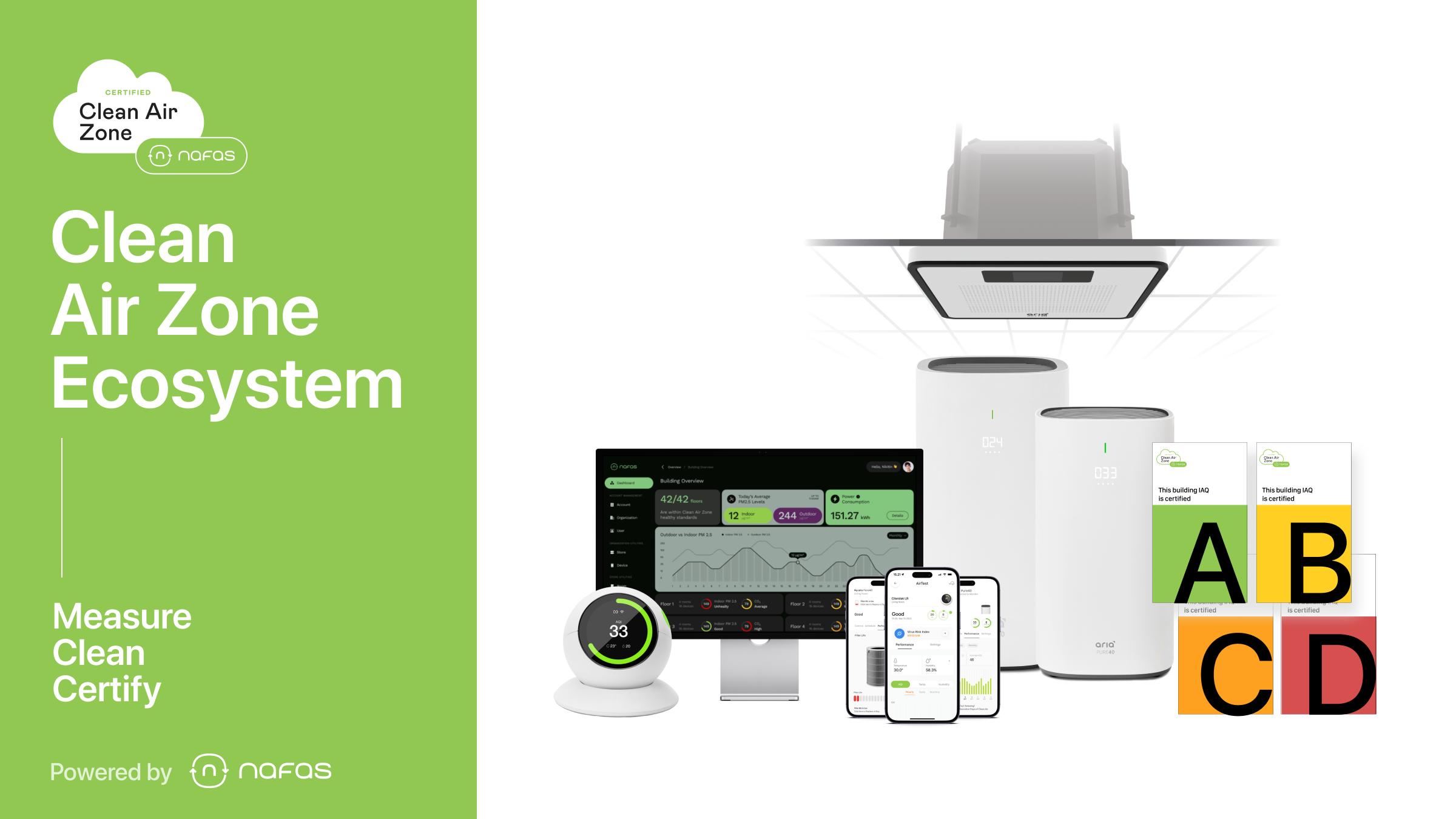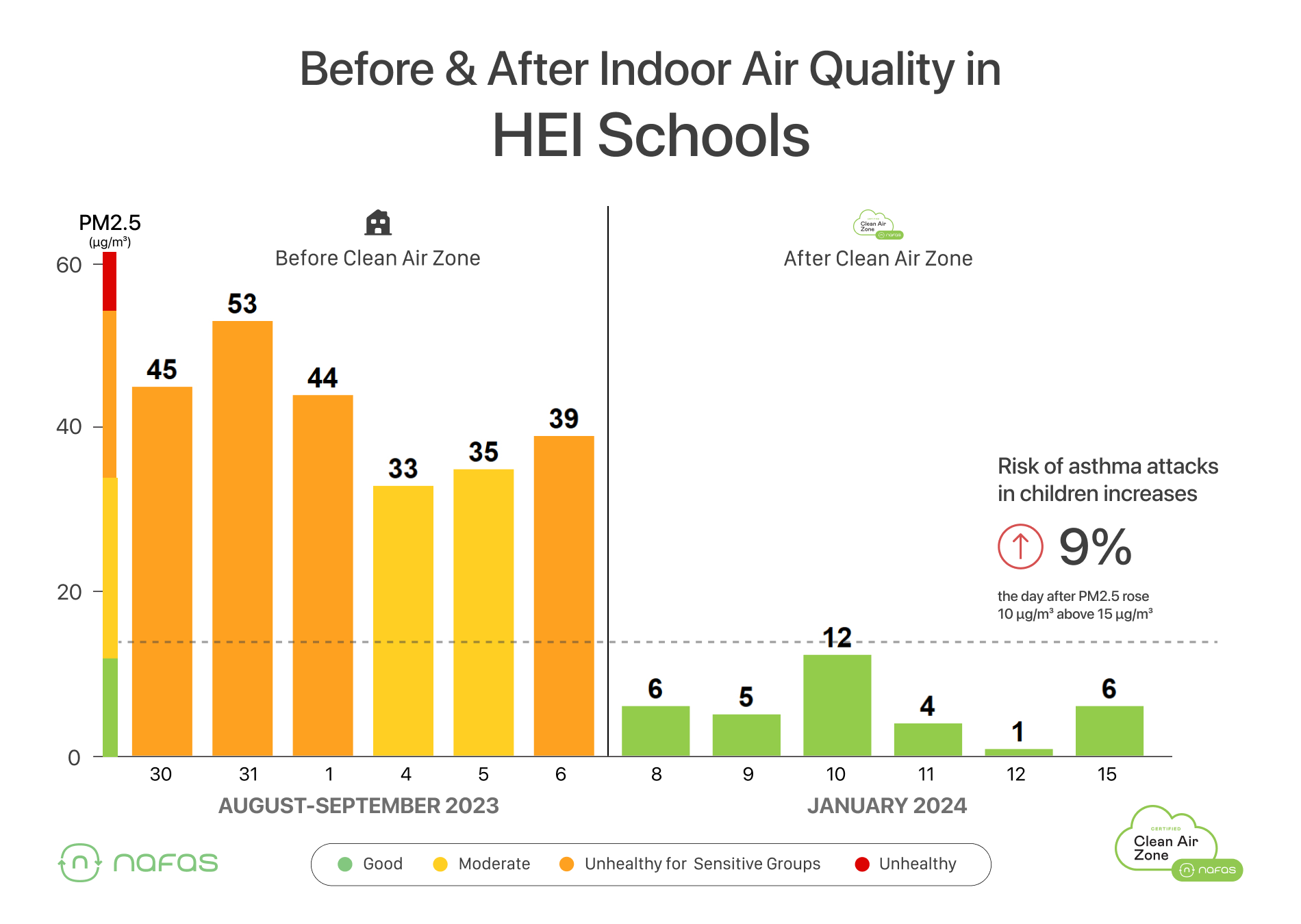LEARN / ARTICLE
HEI Schools Achieves 3.4x Improvement in Indoor Air Quality After Transformed into a Clean Air Zone
CAZ Stories is a series of articles highlighting the significant impact of Clean Air Zones on diagnosing and improving indoor air quality issues for businesses in Indonesia. For more information, read our previous case studies:
- AC Ventures
- Mighty Minds Preschool
- Global shipping company
- Mazars Indonesia
- IShine Kelapa Gading
- YCAB Foundation
- New Zealand School
- Kinderfun Preschool
- Green Montessori School
Air pollution is a serious problem and becomes a health threat globally, including Indonesia. Last year alone, the average pollution level in Jakarta annually reached 38 µg/m3, significantly surpassing the annual National Ambient Air Quality Standards of 15 µg/m3! Notably, this figure is almost 8 times higher than the WHO's annual guidelines.
The World Health Organization (WHO) identifies PM2.5 as a hazardous pollutant, and for good reason. Its minuscule size allows it to easily infiltrate the lungs during inhalation. While PM2.5 poses a threat to the general population, the risk is significantly higher for vulnerable groups, including children under five and adults over sixty.

According to tests conducted by the Nafas team in real-world settings, outdoor air pollution can go into buildings at a staggering rate of up to 100%. This finding raises concerns, particularly for residents in heavily polluted cities like Jakarta.
Nafas addressed this issue in an article titled "Our Buildings Make Us Sick," underscoring the reality that air pollution is not solely an outdoor problem but a significant indoor concern as well. In cities with high pollution levels like Jakarta, indoor air quality often mirrors the outdoor environment, indicating that outdoor air pollutants can infiltrate buildings and compromise the air we breathe. This risk extends to various types of buildings, from residences and offices to our children's schools.
Impact of Air Pollution on Children in Schools
A study featured in the Kosin Medical Journal by researchers from South Korea and Japan delved into the immediate effects of PM2.5 on children. The findings unveiled a significant 9% increase in the risk of asthma attacks among children when the PM2.5 concentration elevates by 10 μg/m³ from the baseline of 15 μg/m³ on the day preceding the asthma attack (Lee et al., 2018).
Responding to this critical concern, Nafas works together HEI Schools Jakarta to improve indoor air quality, aiming to create a healthy environment for students, teachers, and school staff.
The Challenge: Poor Air Quality at HEI Schools Jakarta
To assess the extent of outdoor air pollution leakage into the classrooms of HEI Schools Jakarta, Nafas utilized air quality monitors connected to a cloud-based system. These devices were responsible for tracking PM2.5 levels, CO2 concentration, temperature, and humidity.

Throughout the diagnostic phase, the team found concerning reality: the levels of outdoor and indoor air pollution were nearly the same. Based on the air quality data gathered within HEI Schools Jakarta in August-September 2023, both indoor (illustrated by the blue line) and outdoor (indicated by the black line) pollution levels consistently remained elevated. Pollution levels frequently surpassed 15 μg/m³, exceeding the WHO daily average guideline and the recommended 'Good' air quality limit according to the study.
Field test results revealed spikes in PM2.5 within HEI Schools Jakarta classrooms, reaching nearly 80 µg/m³—more than 5 times the maximum limit recommended by the recommended limit!

The school infrastructure lacks the capability to filter pollutants from the outside and becoming the risk to everyone inside the classrooms. This situation highlights the urgent need to introduce air purifiers in the school, fostering a healthy learning environment for students, teachers, and school staff.
The Solution: Transforming HEI Schools Jakarta Into a Clean Air Zone
To address the poor indoor air quality at schools in heavily polluted cities like Jakarta, Nafas has developed the Clean Air Zone system. This ecosystem is comprehensively designed to maintain healthy indoor air quality throughout operational hours. This can be achieved through an automated and integrated system that includes accurate air quality measurements, effective air filtration techniques, robust certification standards, and data-driven programs involving relevant stakeholders.

Our services are accessible through a subscription model without an upfront investment. The Clean Air Zone ecosystem offers a straightforward and convenient solution to enhance indoor air quality in schools.
Results: Significant Improvement in Indoor Air Quality at HEI Schools Jakarta

In late of 2023, HEI schools Jakarta officialy became of a Clean Air Zone. The partnership between the school and Nafas underscores the significance of fostering a healthy air environment within school classrooms.

The air quality data reveals a significant contrast between indoor and outdoor air quality. It is evident that the Clean Air Zone ecosystem has successfully improved the indoor air quality throughout school hours. The air quality consistently adheres to the recommended limits set by the study, mitigating the risk of asthma attacks among children.

The final result shows that indoor air quality at HEI Schools Jakarta has undergone a substantial improvement, becoming 3.4 times cleaner after transforming into a Clean Air Zone! Now, everyone is breathing clean and healthy air in line with the World Health Organization guideline.
Monthly Air Quality Report
With the data-driven Clean Air Zone service, HEI Schools Jakarta will receive a monthly report containing air quality performance for the previous month. The school can share this information with parents, teachers, staff, and stakeholders. Below is an example of the report received by the school each month:

Becoming a Clean Air Zone is easy!
Keen on ensuring top-notch air quality in your school? Don't hesitate to reach out to us at [email protected] or click the link below to join our mission in setting clean air as the standard in our children's schools!
